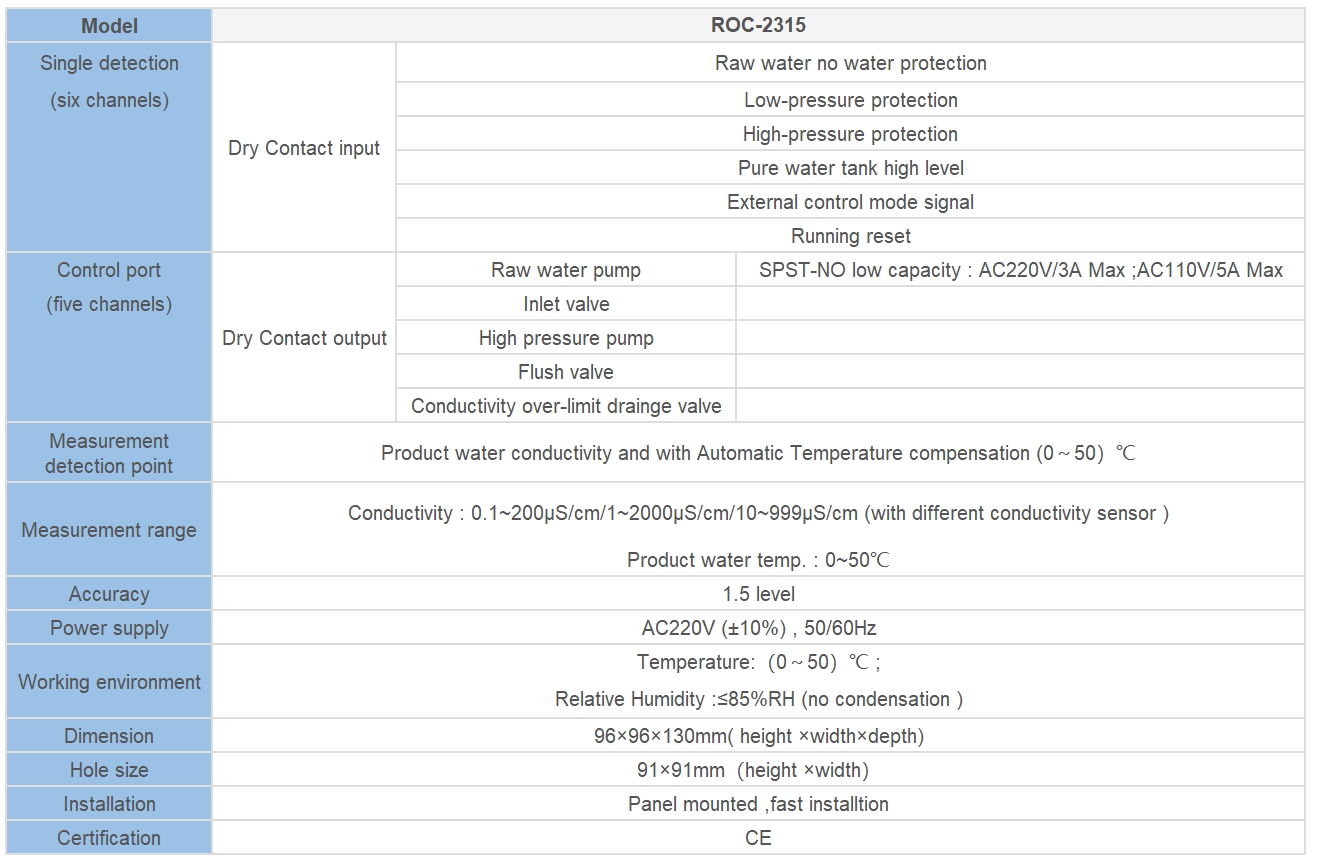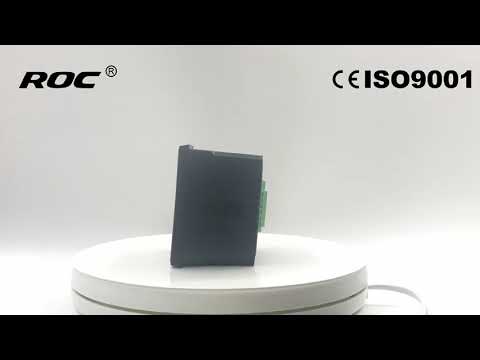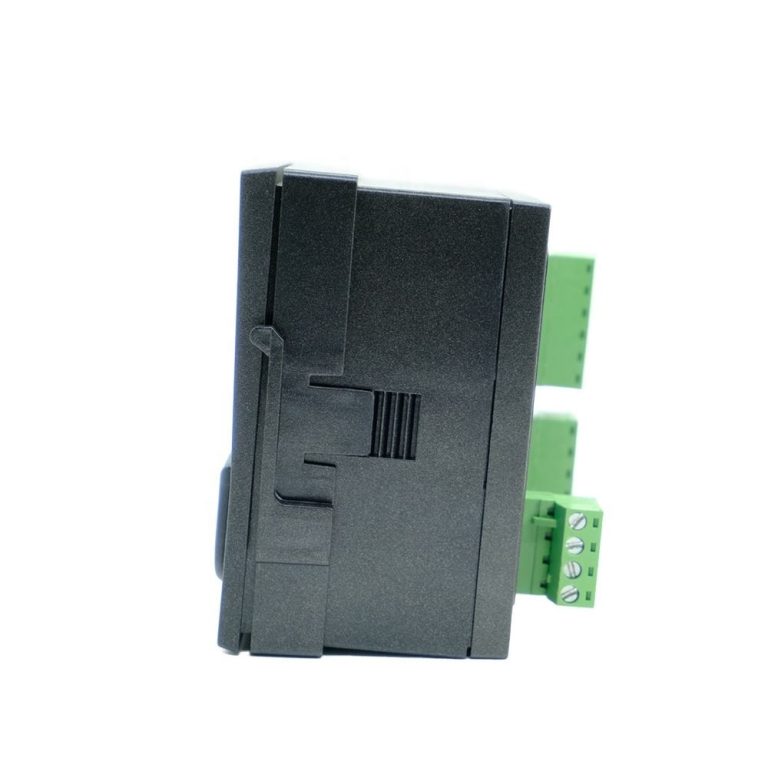Table of Contents
Evaluating the Accuracy of EC Sensors for Water Quality Monitoring
Water quality monitoring is essential for ensuring the safety and health of our water sources. One important aspect of water quality monitoring is the measurement of electrical conductivity (EC) and turbidity. EC sensors and turbidity sensors are commonly used tools for monitoring these parameters in water bodies. In this article, we will discuss the accuracy of EC sensors for water quality monitoring.
| Model | POP-8300 free chlorine online analyzer |
| Measurement range | (0.00-2.00)mg/L(ppm) (0.00-20.00)mg/L(ppm) |
| Accuracy | Indication error 10% |
| Resolution | 0.01mg/L(ppm) |
| Communication interface | RS485 MODBUS RTU communication protocol |
| Analog output | Double channel (4-20)mA output; Isolated, reversible, completely adjustable, instrument/transmitter dual mode; ±0.1mA transmission accuracy |
| Control output | Double channels, Load capacity 50mA(Max),AC/DC 30V |
| Power supply | Connected to electric supply AC80-260V;50/60Hz, compatible with all international market power standards(110V;220V;260V;50/60Hz). |
| Working environment | Temperature:(5-50)℃;relative humidity:≤85% RH(non-condensation) |
| Power Consumption | <20W |
| Storage environment | Temperature:(-20-70)℃;relative humidity:≤85%RH(non-condensation) |
| Installation | Wall mounted (with the preset back cover) |
| Cabinet weight | ≤10kg |
| Cabinet dimension | 570*mm*380mm*130mm(H×W×D) |
EC sensors are used to measure the ability of water to conduct an electrical current. This measurement is directly related to the concentration of ions in the water, which can indicate the presence of contaminants such as salts, metals, and other dissolved solids. EC sensors are widely used in various applications, including agriculture, environmental monitoring, and industrial processes.
One of the key factors that determine the accuracy of EC sensors is the calibration process. Calibration is the process of adjusting the sensor readings to match known standards or reference values. Proper calibration ensures that the sensor provides accurate and reliable measurements. It is important to calibrate EC sensors regularly to maintain their accuracy over time.
Another factor that can affect the accuracy of EC sensors is the temperature of the water. EC measurements are temperature-dependent, meaning that the conductivity of water changes with temperature. Most EC sensors are equipped with temperature compensation features to account for this effect. However, variations in water temperature can still impact the accuracy of the measurements.
In addition to temperature, the presence of suspended particles in water can also affect the accuracy of EC sensors. Turbidity is a measure of the cloudiness or haziness of water caused by suspended particles. High turbidity levels can interfere with the conductivity measurements, leading to inaccurate results. It is important to use turbidity sensors in conjunction with EC sensors to account for these effects and ensure accurate measurements.

When evaluating the accuracy of EC sensors, it is important to consider the range and resolution of the sensor. The range refers to the minimum and maximum values that the sensor can measure, while the resolution refers to the smallest change in conductivity that the sensor can detect. A wider range and higher resolution allow the sensor to capture a broader range of conductivity values with greater precision.
In conclusion, EC sensors are valuable tools for water quality monitoring, providing important information about the conductivity of water and the presence of contaminants. To ensure the accuracy of EC sensor measurements, it is important to calibrate the sensor regularly, consider the effects of temperature and turbidity, and select a sensor with an appropriate range and resolution. By following these guidelines, researchers and water quality professionals can obtain reliable and accurate data for monitoring and managing water resources.
The Importance of Calibrating Turbidity Sensors for Precise Data Collection
Turbidity sensors are essential tools in various industries, including environmental monitoring, water treatment, and research. These sensors measure the cloudiness or haziness of a liquid caused by suspended particles, such as sediment, algae, or other contaminants. One type of turbidity sensor that is commonly used is the EC sensor turbidity sensor, which utilizes electrical conductivity to measure turbidity levels in water.
Calibrating turbidity sensors is crucial for ensuring accurate and reliable data collection. Calibration involves adjusting the sensor to match a known standard or reference value. This process helps to eliminate any errors or inaccuracies in the sensor readings, ensuring that the data collected is precise and reliable.
One of the main reasons why calibrating turbidity sensors is important is to maintain the sensor’s accuracy over time. Like any other instrument, turbidity sensors can drift or become less accurate over time due to factors such as environmental conditions, wear and tear, or electronic interference. By regularly calibrating the sensor, you can ensure that it continues to provide accurate and reliable measurements.
Calibrating turbidity sensors also helps to account for any variations in the sensor’s performance. Different sensors may have slight variations in their readings, even if they are the same model and brand. By calibrating each sensor individually, you can account for these variations and ensure that all sensors are providing consistent and accurate measurements.
Another important reason to calibrate turbidity sensors is to ensure that the sensor is properly configured for the specific application or environment in which it is being used. Different applications may require different calibration settings to account for factors such as the type of particles present in the water, the temperature of the water, or the level of turbidity being measured. By calibrating the sensor to match the specific requirements of the application, you can ensure that the data collected is relevant and meaningful.
In addition to maintaining accuracy and consistency, calibrating turbidity sensors can also help to identify any potential issues or problems with the sensor. During the calibration process, you may discover that the sensor is not functioning properly, or that it is in need of maintenance or repair. By identifying these issues early on, you can prevent any data inaccuracies or sensor failures that could impact your results.
Overall, calibrating turbidity sensors is essential for ensuring accurate and reliable data collection. By regularly calibrating your sensors, you can maintain accuracy and consistency, account for variations in sensor performance, configure the sensor for specific applications, and identify any potential issues or problems with the sensor. This will help to ensure that the data collected is precise, reliable, and meaningful, allowing you to make informed decisions and take appropriate actions based on the results.






